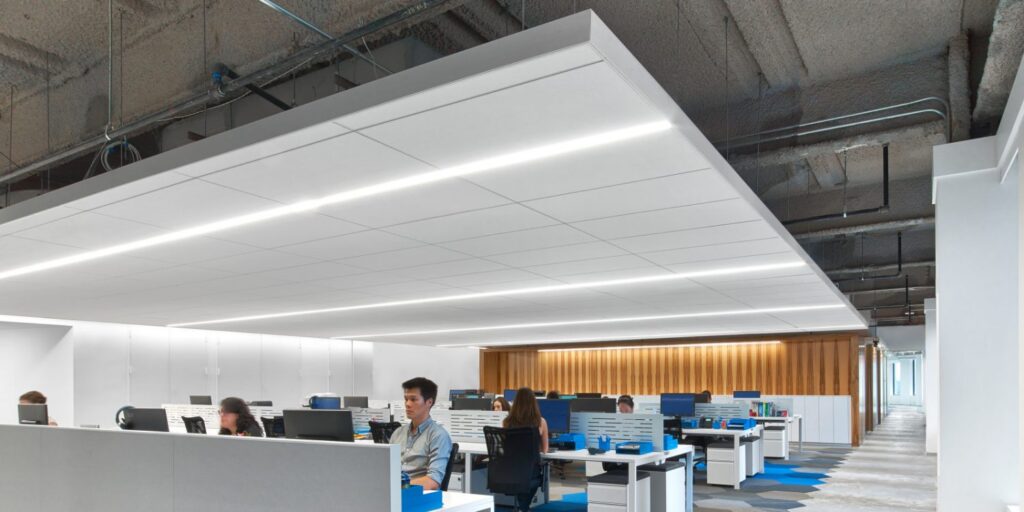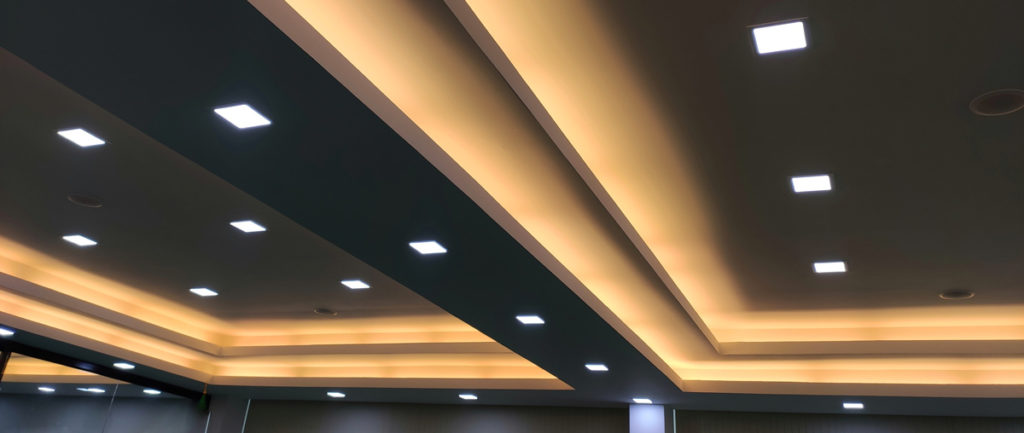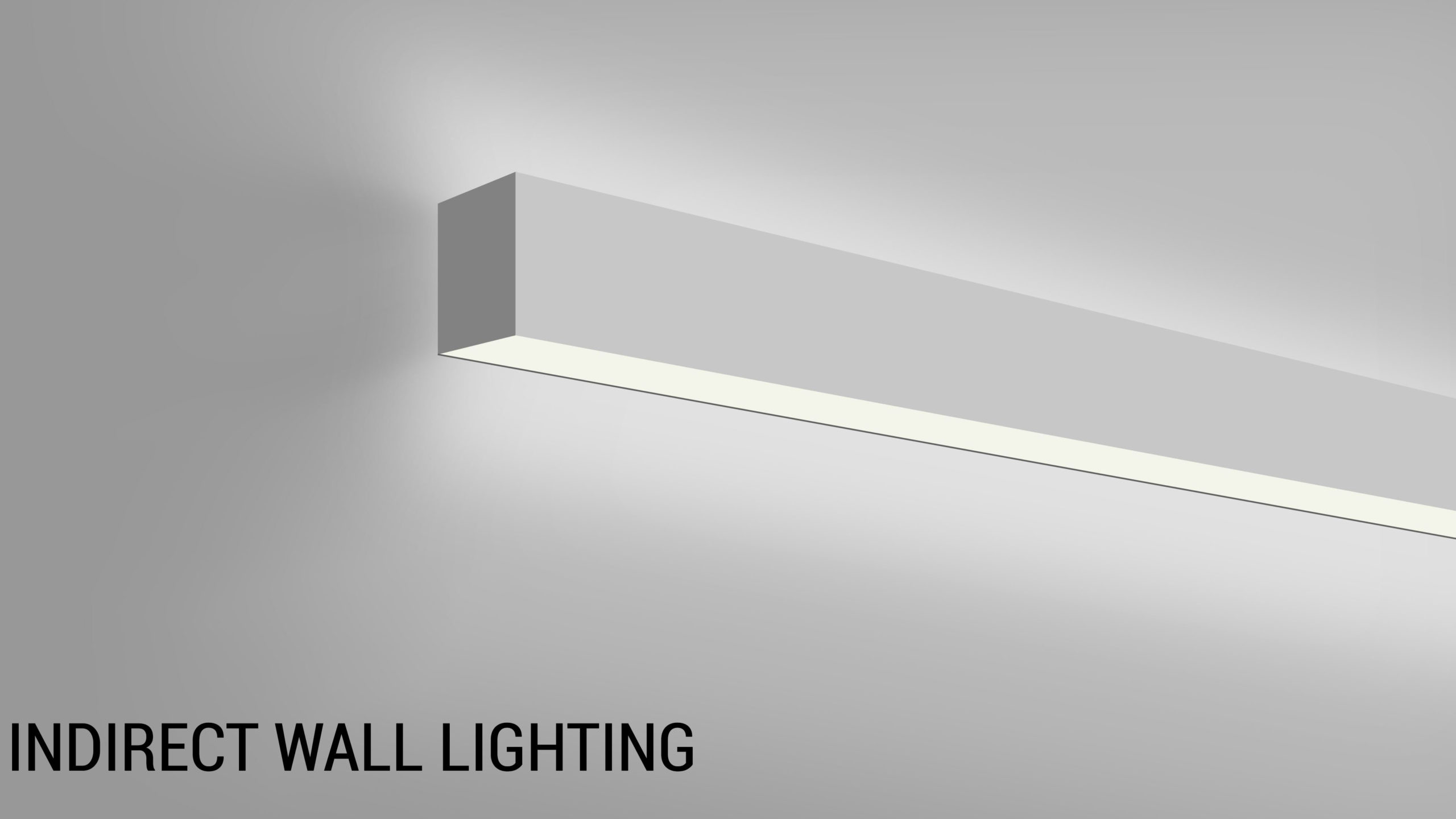Indirect Lighting vs Direct Lighting – Find Out Which Is Best For You February 13, 2023 – Posted in: General Info, Lighting Information

Table of Contents
What Is Direct Lighting?
Direct lighting is non-reflected light that is directed at a specific object or area rather than being diffused upward or reflected against objects like indirect lighting. It provides focused light & strong illumination towards an intended target.
Examples of direct lighting include: direct sunlight, task lighting, downlights, track lighting, troffers, and spot lighting.

While both types have their advantages and drawback there is some benefits of direct light that can’t be overlooked. In this piece, we will be discussing direct lighting vs indirect lighting, to help you make an informed decision.
Advantages Of Direct Lighting
- Sharper shadows – a great way to accentuate certain objects in film
- Requires less fixtures to achieve similar foot candle ratings – a lot less light is “wasted” so achieving lighting standards and minimums is easier
- Brighter & sharper light
- Strong light that’s focused on a particular area or task
- Typically more cost effective – as it requires less fixtures to reach the same amount of lumens
This makes it a popular choice to be used in safety applications such as stairways and roadways. It’s also the type of light that’s most used for security (think flood lights).
Disadvantages Of Direct Lighting
- Harsher light that causes screen reflections
- Lighting that is uneven and casts unnecessary shadows
- More stressful on the eyes due to additional glare – this can cause migraines among some people that are sensitive
Since even small distractions and inconveniences can add up over time, it’s recommended to make sure you use the right style of light for the right application. No matter what your preference, there should be a variety of options available on the market to fit your needs. Recent developments in the LED space has allowed for less harsh light and better control of light sources to reduce many of the downsides. For example, many of our fixtures incorporate dimming, diffusers and other functions to reduce eye strain and glare.

What Is Indirect Lighting?
Indirect lighting is light that is reflected or bounced from an object or surface such as a wall, floor, or ceiling. Essentially any light coming from an object that isn’t a light source. Indirect lighting is a type of ambient light.
Examples of indirect lighting: up-lighting, cove lighting, wall washers, and reflected sunlight.
A common way used to achieve this type of lighting is by using one or more light sources to aim onto walls and ceilings that help reflect the throughout the space and reduce shadows. If you’re attempting to achieve this, you should stick with matte light colored paint. This is typically a good fit for environments that may be prone to glare issues such as rooms with lots of screens.

Advantages Of Indirect Lighting
- provides a more even and better diffused light – this helps set a more inviting and warmer atmosphere
- reduces shadows and glare – this is one of the main advantages for areas like offices, libraries or other screen heavy areas.
- reduces eye strain – this is also why we recommend this type of lighting for your bedroom or home office
- adds depth to a room – it can be used in interior design to alter a rooms feel
- creates a soft, diffused light
While there is a lots of great benefits, this type of lighting has quite big drawbacks in terms of efficiency and sustainability. This is why natural sunlight is once of the best sources of light to integrate into your space.
Disadvantages of Indirect Lighting
- Much more expensive – especially for large applications such as office spaces, the pricing will add up. This cost is recurring since your energy bill will be higher as well.
- Shadows might still appear – shadows might still be cast on walls or ceilings especially for up-lights that can collect dust quite easily.
- Not enough light – a lot of times you will not have enough light for your application once it’s reflected from a wall or ceiling
- Not very energy efficient – although the amount of light output is generally higher, a lot of it gets absorbed by the walls and ceilings causing lots of wasted energy
- Reduce contrast of a room
Due to these drawbacks, many businesses opt-in for efficiency first choosing to go with the direct approach, especially when it’s technically a greener choice.

Frequently Asked Questions
How Do You Indirectly Light A Room?
Use ample amounts of wall lighting and focus on using accent lighting with up-lights to create diffused sources of light from all over your room. You can also use spotlights pointed at a wall to create this type of diffused source of light as well. We also have a guide on how to light a room with no overhead ceiling lighting here.
Is light through a window considered direct sunlight?
If the sunlight doesn’t pass through a medium, then the light is direct. If sunlight bounces or passes through a medium like curtain or leaves it is indirect.
Is Indirect Lighting Better?
While it offers many benefits such as less glare and less eye strain, it has several drawbacks that might make it the wrong choice for you. Be prepared for things such as a higher energy bill and the need for more light fixtures to achieve the same amount of foot candles.
I have been the project manager for Modern.Place since early 2016, spending three of those years working overseas on the manufacturing & procurement side of the LED lighting industry. Constantly learning and passing on knowledge to others while excited for what the lighting industry will involve into next.

